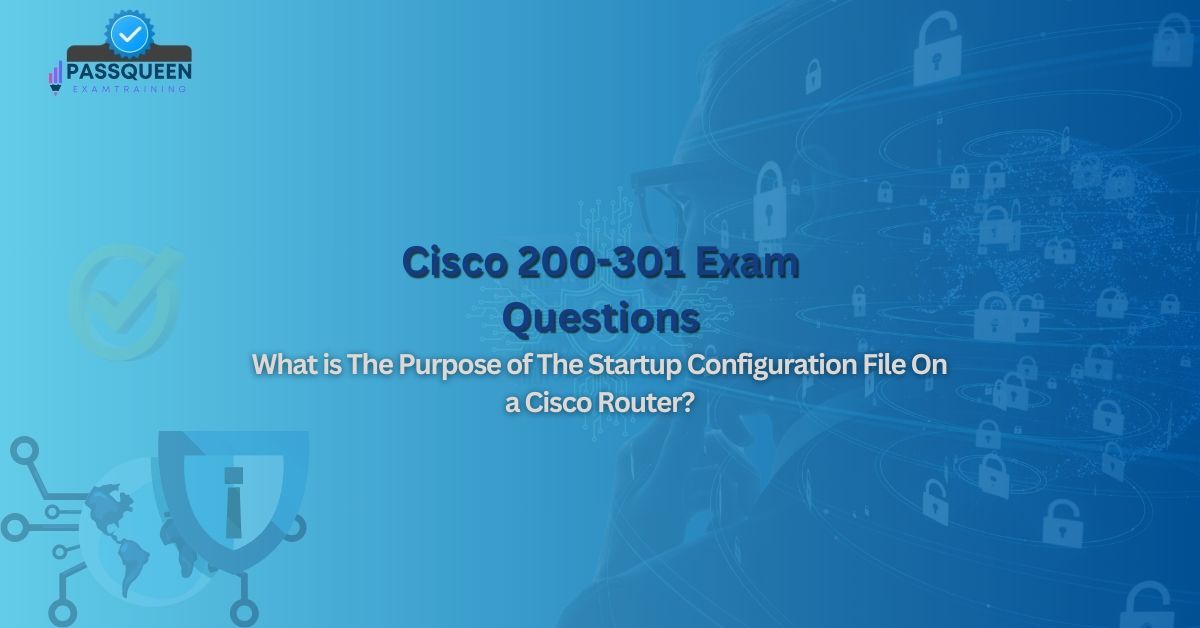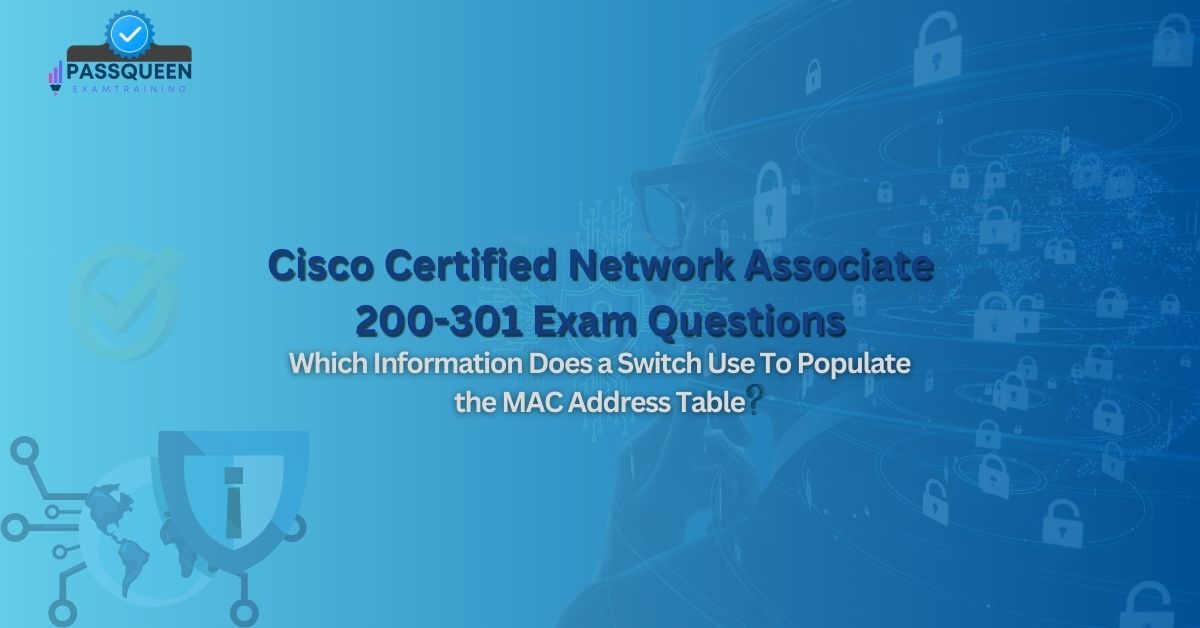Introduction
In the world of networking, Media Access Control (MAC) plays a pivotal role in ensuring efficient and reliable communication between devices. For IT professionals and certification aspirants, understanding MAC is essential, as it forms the foundation of data link layer (Layer 2) communication in the OSI model. PassQueen, a trusted resource for the latest and valid IT certification exam updates and preparation materials, provides invaluable insights into these topics. This article offers a comprehensive overview of MAC, explores three key ways it is used in networking, discusses additional uses, highlights practical applications, and provides exam preparation tips for the Cisco 200-301 Exam Questions. By the end of this article, you’ll have a clear understanding of MAC and its importance in networking.
Overview of Media Access Control (MAC)
Media Access Control (MAC) is a sublayer of the data link layer (Layer 2) in the OSI model. It is responsible for controlling how devices in a network gain access to the transmission medium and transmit data. The MAC sublayer uses MAC addresses, which are unique identifiers assigned to network interfaces, to ensure data is delivered to the correct device within a local network.
Key characteristics of MAC include:
- MAC Addresses: A 48-bit identifier represented as six pairs of hexadecimal digits (e.g., 00:1A:2B:3C:4D:5E).
- Uniqueness: Each MAC address is globally unique, ensuring no two devices have the same address.
- Hardware-Based: MAC addresses are typically hardcoded into the network interface card (NIC) by the manufacturer.
MAC is essential for enabling communication within a network segment and ensuring data integrity and reliability.
Three Key Ways MAC is Used in Networking
MAC plays a critical role in networking by addressing three primary functions:
- Addressing:
MAC addresses are used to uniquely identify devices within a local network. When data is transmitted, the source and destination MAC addresses are included in the frame header. This ensures that the data reaches the correct device. - Media Access Control:
MAC protocols regulate how devices access and share the transmission medium (e.g., Ethernet cables or wireless channels). This prevents data collisions and ensures efficient communication. Common MAC protocols include: - CSMA/CD (Carrier Sense Multiple Access with Collision Detection): Used in wired Ethernet networks to detect and resolve collisions.
- CSMA/CA (Carrier Sense Multiple Access with Collision Avoidance): Used in wireless networks to avoid collisions.
- Frame Delimiting:
MAC is responsible for framing data into packets (frames) for transmission. Each frame includes a header with source and destination MAC addresses, a payload containing the data, and a trailer for error detection (e.g., CRC - Cyclic Redundancy Check).
Additional Uses of MAC in Networking
Beyond the three key functions, MAC is also used in the following ways:
- Switching:
Network switches use MAC addresses to forward frames to the correct port. Switches maintain a MAC address table that maps MAC addresses to ports, enabling efficient data forwarding. - VLAN Tagging:
MAC addresses are used in VLAN (Virtual Local Area Network) tagging to segment network traffic. VLANs allow multiple logical networks to coexist on the same physical infrastructure. - Security:
MAC filtering is a security feature that restricts network access based on MAC addresses. Only devices with approved MAC addresses are allowed to connect to the network. - Broadcast and Multicast:
MAC addresses are used for broadcast (FF:FF:FF:FF:FF:FF) and multicast (e.g., 01:00:5E:00:00:01) communication. Broadcast sends data to all devices in a network, while multicast sends data to a specific group of devices.
Practical Applications of MAC in Networking
MAC is widely used in various networking scenarios. Here are some practical applications:
- Ethernet Networks:
MAC is the foundation of Ethernet networks, enabling devices to communicate within a LAN. Switches use MAC addresses to forward frames to the correct destination. - Wireless Networks:
In Wi-Fi networks, MAC protocols like CSMA/CA ensure efficient communication between devices and access points. - Network Security:
MAC filtering is used to enhance network security by restricting access to authorized devices. - VLANs:
MAC addresses are used in VLAN tagging to segment network traffic and improve performance. - Broadcast and Multicast Applications:
MAC addresses enable efficient delivery of broadcast and multicast traffic, such as live video streaming and online gaming.
Exam Prep Tips for Cisco 200-301 Exam Questions
For IT certification aspirants, understanding MAC is essential for the Cisco 200-301 exam. Here are some tips to help you prepare:
- Understand the Basics:
Be familiar with the structure and purpose of MAC addresses, including unicast, broadcast, and multicast. - Learn MAC Protocols:
Study MAC protocols like CSMA/CD and CSMA/CA, and understand how they regulate media access. - Practice Frame Analysis:
Practice analyzing Ethernet frames to identify source and destination MAC addresses, payloads, and error detection mechanisms. - Study Switching and VLANs:
Understand how switches use MAC addresses for forwarding and how VLANs use MAC addresses for segmentation. - Review Exam Objectives:
Focus on the exam objectives related to Layer 2 addressing, switching, and MAC protocols. - Take Practice Tests:
Use practice tests to assess your knowledge and identify areas for improvement.
Conclusion
Media Access Control (MAC) is a fundamental concept in networking, enabling efficient and reliable communication between devices. For IT professionals preparing for certifications like the Cisco 200-301, understanding MAC is essential. PassQueen, with its up-to-date exam resources and preparation materials, is an invaluable tool for mastering these concepts and achieving certification success.
By understanding the key functions, additional uses, and practical applications of MAC, you’ll be well-equipped to tackle exam questions and apply this knowledge in real-world networking scenarios. Whether you’re studying for an exam or working in the field, MAC is a key concept to master.
Sample Questions for Cisco 200-301 Exam
What are three ways that media access control is used in networking? (Choose Three)
A. Addressing
B. Routing
C. Media Access Control
D. Frame Delimiting
E. Encryption
Correct Answers:
A. Addressing
C. Media Access Control
D. Frame Delimiting
Explanation:
Media Access Control (MAC) is used in networking for addressing (identifying devices with MAC addresses), media access control (regulating access to the transmission medium), and frame delimiting (framing data into packets for transmission). Routing and encryption are functions of higher layers in the OSI model and are not directly related to MAC.













